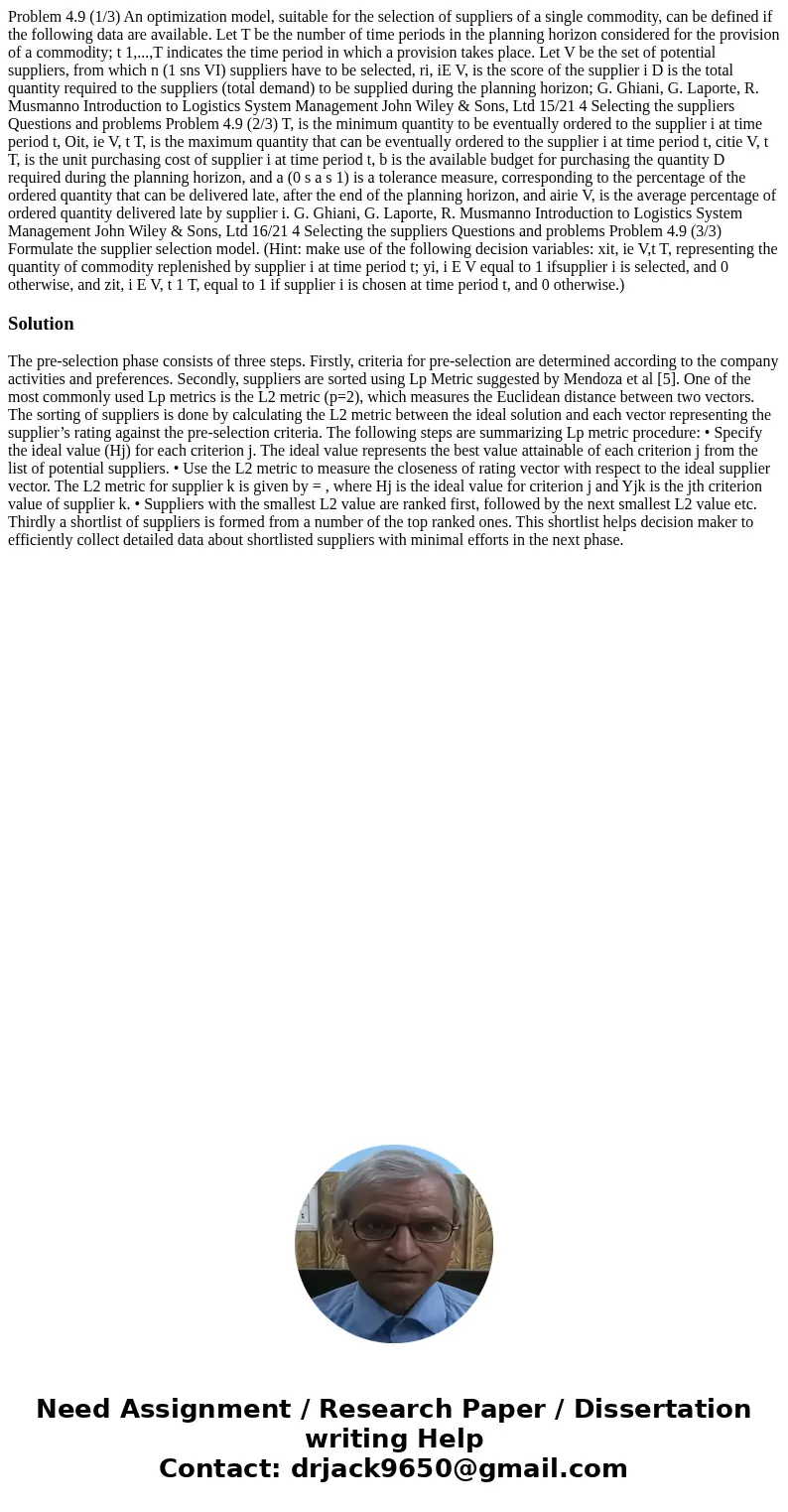Problem 4.9 (1/3) An optimization model, suitable for the selection of suppliers of a single commodity, can be defined if the following data are available. Let T be the number of time periods in the planning horizon considered for the provision of a commodity; t 1,...,T indicates the time period in which a provision takes place. Let V be the set of potential suppliers, from which n (1 sns VI) suppliers have to be selected, ri, iE V, is the score of the supplier i D is the total quantity required to the suppliers (total demand) to be supplied during the planning horizon; G. Ghiani, G. Laporte, R. Musmanno Introduction to Logistics System Management John Wiley & Sons, Ltd 15/21 4 Selecting the suppliers Questions and problems Problem 4.9 (2/3) T, is the minimum quantity to be eventually ordered to the supplier i at time period t, Oit, ie V, t T, is the maximum quantity that can be eventually ordered to the supplier i at time period t, citie V, t T, is the unit purchasing cost of supplier i at time period t, b is the available budget for purchasing the quantity D required during the planning horizon, and a (0 s a s 1) is a tolerance measure, corresponding to the percentage of the ordered quantity that can be delivered late, after the end of the planning horizon, and airie V, is the average percentage of ordered quantity delivered late by supplier i. G. Ghiani, G. Laporte, R. Musmanno Introduction to Logistics System Management John Wiley & Sons, Ltd 16/21 4 Selecting the suppliers Questions and problems Problem 4.9 (3/3) Formulate the supplier selection model. (Hint: make use of the following decision variables: xit, ie V,t T, representing the quantity of commodity replenished by supplier i at time period t; yi, i E V equal to 1 ifsupplier i is selected, and 0 otherwise, and zit, i E V, t 1 T, equal to 1 if supplier i is chosen at time period t, and 0 otherwise.)
The pre-selection phase consists of three steps. Firstly, criteria for pre-selection are determined according to the company activities and preferences. Secondly, suppliers are sorted using Lp Metric suggested by Mendoza et al [5]. One of the most commonly used Lp metrics is the L2 metric (p=2), which measures the Euclidean distance between two vectors. The sorting of suppliers is done by calculating the L2 metric between the ideal solution and each vector representing the supplier’s rating against the pre-selection criteria. The following steps are summarizing Lp metric procedure: • Specify the ideal value (Hj) for each criterion j. The ideal value represents the best value attainable of each criterion j from the list of potential suppliers. • Use the L2 metric to measure the closeness of rating vector with respect to the ideal supplier vector. The L2 metric for supplier k is given by = , where Hj is the ideal value for criterion j and Yjk is the jth criterion value of supplier k. • Suppliers with the smallest L2 value are ranked first, followed by the next smallest L2 value etc. Thirdly a shortlist of suppliers is formed from a number of the top ranked ones. This shortlist helps decision maker to efficiently collect detailed data about shortlisted suppliers with minimal efforts in the next phase.

 Homework Sourse
Homework Sourse